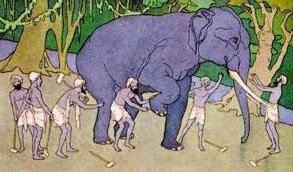

Final remarks
Jung, in the foreword to his ETH Childhood Dream seminar put it this way: "What we have to know when someone dreams of an elephant, is not what I as the analyst think about elephants, but rather what it is connected with for the person who had the dream. Perhaps he was at the zoo in the evening before he had the dream, another was in a wilderness and had an experience with an elephant, a third was told by his wife: You are a bold elephant, and so on. For each, the elephant means something else. You must ask carefully about what happened the day before. When this contextual information is being collected, one must see that the person whose dream is being interpreted does not make free associations, but rather keeps to the dream image. Because the dream image is not something random - else we must indeed say: in nature is everything random, a chaos; there is no explanation. We must assume that dreams exist within a regulated world, thus there is a certain causality, not just pure arbitrariness. There exist certain reasons why the dream is just as it is and not different. When you investigate the individual imaginations of the dream precisely in terms of the context, you'll discover that certain contents - though by far not in all dreams - are of an archetypal nature. ...